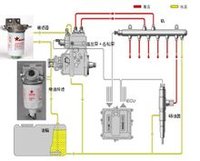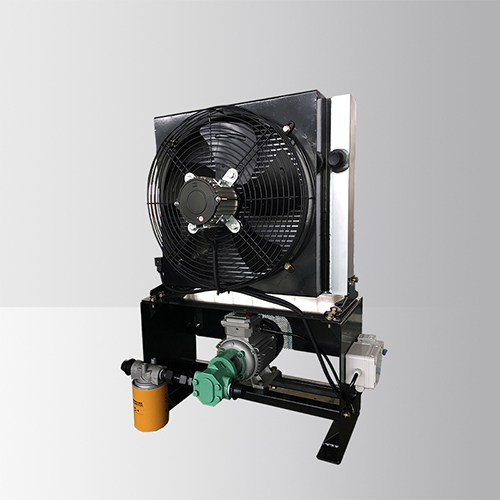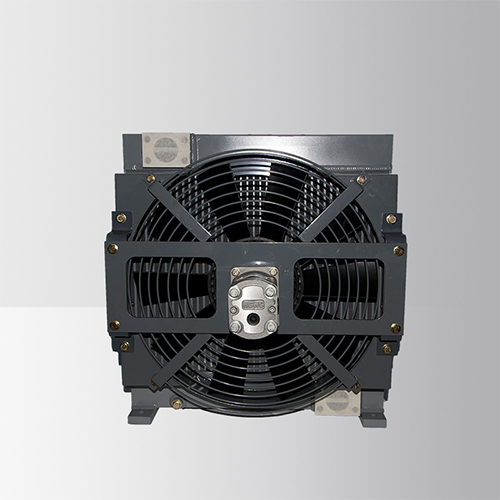Common Rail EFI technology refers to a fuel supply system in which the injection pressure generation and injection process are completely separated from each other in a closed-loop system composed of a high-pressure oil pump, a pressure sensor, and an electronic control unit (ECU).
          The common rail system separates the fuel pressure generation from the fuel injection. If the single pump diesel injection technology is likened to the revolution of diesel technology, the common rail can be called rebellion because it deviates from the traditional diesel system and is similar to it. In order gasoline injection system. Common rail systems open up new ways to reduce diesel engine emissions and noise.  Europe can be said to be a paradise for diesel cars, with German diesel cars accounting for 39%. Diesel cars have a history of nearly 70 years. In the last 10 years, diesel engines have seen rapid development. In 1997, Bosch and Mercedes-Benz jointly developed the Common Rail System. In Europe today, many brands of cars are equipped with common-rail diesel engines. For example, Peugeot has HDI common-rail diesel engines and Fiat's JTD engines, while Delphi has developed the Multec DCR diesel common-rail system.
Europe can be said to be a paradise for diesel cars, with German diesel cars accounting for 39%. Diesel cars have a history of nearly 70 years. In the last 10 years, diesel engines have seen rapid development. In 1997, Bosch and Mercedes-Benz jointly developed the Common Rail System. In Europe today, many brands of cars are equipped with common-rail diesel engines. For example, Peugeot has HDI common-rail diesel engines and Fiat's JTD engines, while Delphi has developed the Multec DCR diesel common-rail system.
The common rail system differs from the diesel injection system previously driven by a camshaft. The common rail diesel injection system completely separates the injection pressure generation and the injection process from each other. The solenoid valve controlled injector replaces the traditional mechanical injector. The fuel pressure in the fuel rail is generated by a radial piston high pressure pump. The pressure is independent of the engine speed and can be freely set within a certain range. . The fuel pressure in the common rail is controlled by an electromagnetic pressure regulating valve, and continuous pressure adjustment is performed according to the working requirements of the engine. The electronic control unit acts on the pulse signal on the solenoid valve of the injector to control the fuel injection process. The amount of fuel injection depends on the oil pressure in the fuel rail and the length of the solenoid valve opening time, and the liquid flow characteristics of the injector.
Fuel injection pressure is an important indicator for diesel engines because it is linked to engine power, fuel consumption, and emissions. At present, the common rail diesel injection system has increased the fuel injection pressure to 1800 bar.
The air-to-Oil Cooler is mainly used in various equipments that use petroleum, lubricating oil, hydraulic oil, etc. as heat medium to achieve the purpose of cooling the high-temperature oil passing through the heat exchanger through air-cooling.
Advantages: Strong corrosion resistance, compact structure, small footprint, and high degree of customization.various air-cooled drive modes, DC motor, AC motor, hydraulic motor, air motor, special explosion-proof motor, etc., better to choose the appropriate drive mode according to industrial environmental factors, without the help of external cooling medium, lower The hardware requirements can be used to cool the oil and ultimately ensure the benign operation of the equipment.
Applications: Construction machinery engines, hydraulic transmission equipment, air compressors, production and processing equipment, industrial spraying equipment, electrical equipment, generator sets, marine equipment, wind power equipment, metallurgical equipment, etc.


Air-Oil Cooler,Air Oil Cooler,Oil Cooler,Oil Cooler Kit
Xinxiang Zhenhua Radiator Co., Ltd. , http://www.thermictransfer.com